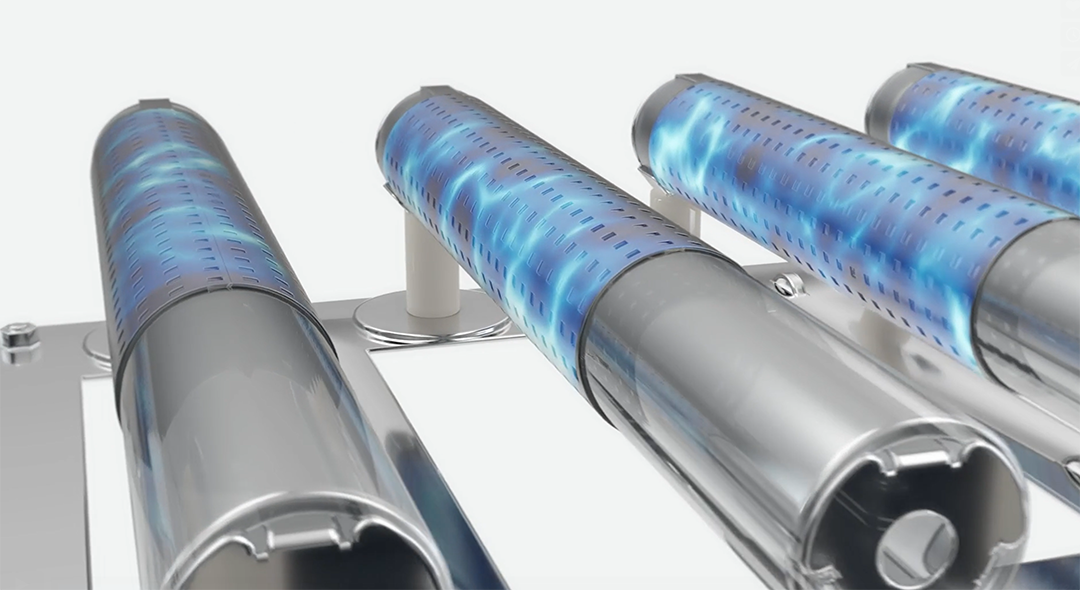The Allergen Impact: Air Disinfection is More Than Just Germ Control
Air Disinfection also Improves IAQ (Indoor Air Quality) and Reduces Allergy Triggers
Air disinfection technologies are being widely used to reduce the risk of airborne transmission of the Covid-19 virus, but breathing clean has big implications for hospitality businesses as travel opens up. It is also proving to be extremely effective at reducing mold allergy symptoms in buildings that have sustained water damage, or have other indoor air quality issues.
The NanoStrike air disinfection technologies we work with are typically found in ORs (Operating Rooms), ICUs (Intensive Care Units), clinics, labs, schools, universities, office buildings, restaurants, and more. But we were recently reminded that infection control and prevention is not the only benefit afforded by clean air.
The Hotel Distil is located in Louisville, Kentucky’s historic Whiskey Row. The property has ben beautifully restored, with the latest in air handling, heating, and cooling technologies. But even the best airflow management solutions cannot keep all construction dust, pollen, particulates and pollutants at bay as valets and guests move in and out of the lobby doors.
It was a Saturday morning and there were a lot guests moving through the front desk area. We asked the manager if he wanted us to plug in our air disinfection device, explaining that it deactivated and destroyed viruses and bacteria in the air. He thought it was a great idea.
When we came back downstairs an hour later, the manager was excited to share the following:
“I have some issue with my allergies and I did not have my medicine with me. About an hour or so after we got this plugged up — everything is clear. No meds, and I can breathe. My eyes aren’t draining, my nose isn’t draining. This thing is amazing.”
Andre Battle
NanoStrike Low-E Atmospheric Plasma air disinfection systems have been proven effective deactivating and destroying airborne viruses and bacteria in clinical settings. But they are also making it easier for allergy and asthma sufferers work, learn, and live with fewer symptoms by removing respiratory irritants from indoor air.
We saw the allergen impact again while collecting baseline measurement data on airborne bacteria, mold, and fungi in an older school board admin building in Murray, Ky. The leased property had flooded, but the landlord did not have the resources to fund the remediation (no flood insurance). The board was forced to staff the offices while options are being considered, but some employees suffered from mold allergy symptoms.
If you have a mold allergy, your immune system overreacts when you breathe in mold spores. A mold allergy can make you cough, make your eyes itch and cause other symptoms that make you miserable. In some people, mold allergy is linked to asthma and exposure causes restricted breathing and other airway symptoms.
If you have a mold allergy, the best defense is to reduce your exposure to the types of mold that cause your reaction.
-Mayo Clinic – Mold Allergy
The school system board offices plugged in NanoStrike air disinfection devices in staff offices located in their older buildings. By the following morning regular allergy sufferers were symptom free. In most coastal areas the problems with moisture are even more prevalent. Whether the root cause if water damage is a fire response, roof leak, plumbing problem, or flooding the result is a remediation project. If that remediation project cannot be undertaken immediately, air disinfection via Low-E atmospheric plasma is a proven way to ensure that people can live, or work, or learn in a “sick building” without feeling sick themselves.
Learn more via the links below, or give us a call at (800) 795-1486 to discuss your application’s specific requirements.
Low-Energy Plasma Deactivates and Detroys Bioaerosolized Pathogens and Reduces Asthma Triggers
It has been shown to reduce indoor air pollution by 67% in a university study.




